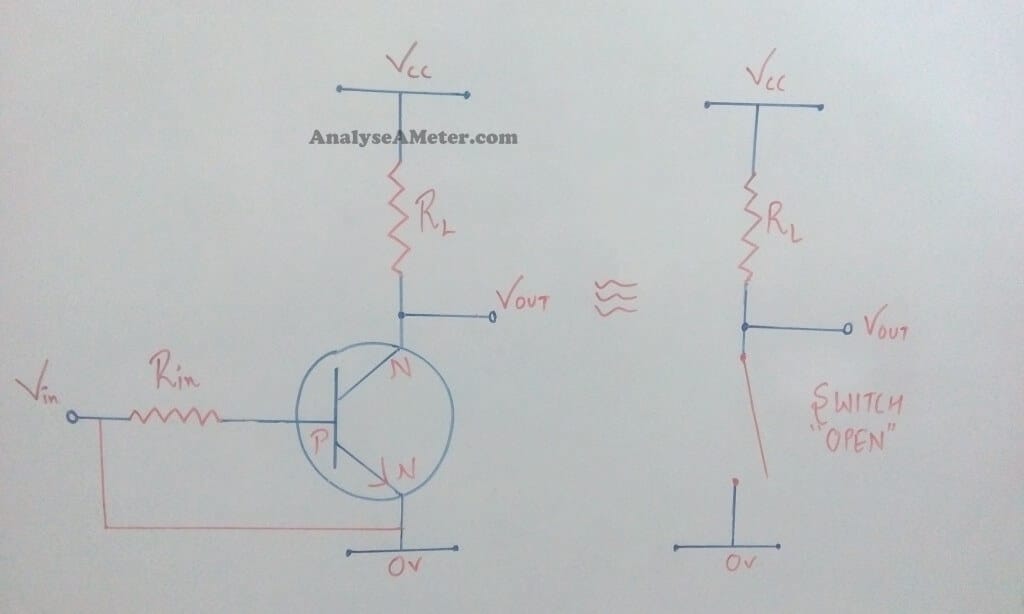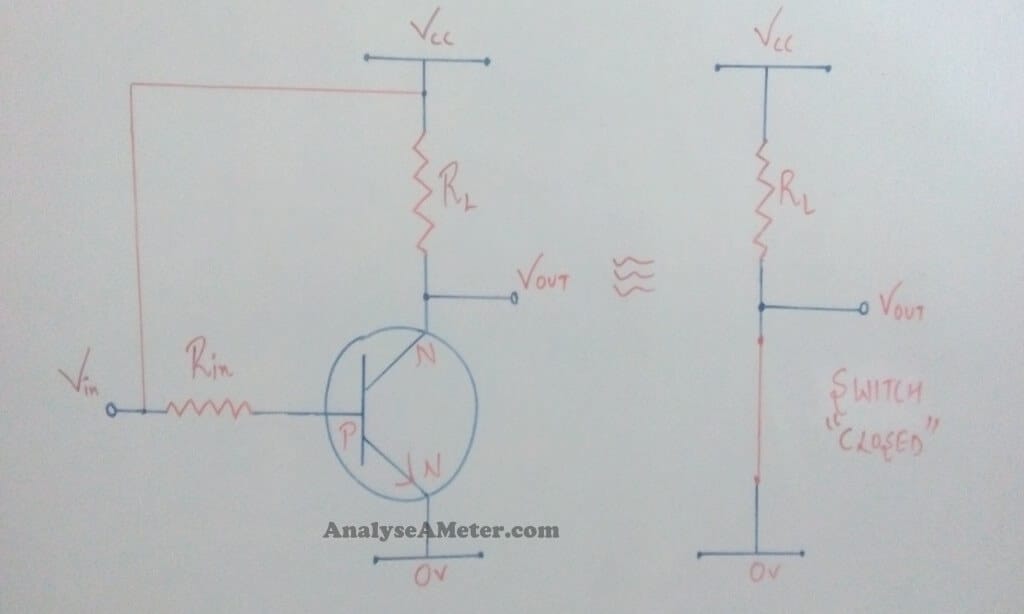A transistor is a semiconductor device used to switch or amplify electrical power and electronic signal. In our previous tutorial, we have explained how to use a transistor as an oscillator and a transistor amplifier. Here we are going to explain to you how to use Transistor as a switch and testing a transistor using multimeters & switching circuits.
Transistor as a Switch:
When we use a switching transistor, the transistor base biasing voltage is applied in such a way that it always operates within its Active region. Therefore, both NPN and PNP types of transistors are made to operate as On/Off type solid-state switches. This is done by biasing the base of the transistor.
Nowadays we use a transistor as a switch because transistor switches can control high power devices such as solenoids, motors, etc and also in digital electronics and logic gate circuits.
If you want to use Bipolar Junction Transistor (BJT) as a switch in any of the electronic circuits, then you have to arrange the biasing of the transistor. NPN or PNP transistors should be biased in such a way that they can operate the transistors at both sides of the I-V characteristics curve.
Basically Transistor as a switch operates in two regions; one is the Saturation region and the other is the Cut-off region.
(i) Saturation Region
For the supply of a maximum amount of base current we basically bias the transistor in the Saturation region. It results in maximum collector current and minimum collector-emitter voltage drop.
This further results in the depletion region being as small as possible which allows the maximum current flow through the transistor. Therefore, the transistor is switched ‘Fully-On’.
Saturation Region Characteristics:
In saturation region you have to keep the following conditions in your mind:
- Base-Emitter junction is always forward biased.
- Always connect the input and Base to VCC.
- Base-Collector junction is always forward biased.
- Current Emitter voltage is always equal to 0 i.e. Vce =0
- Base-Emitter voltage is always greater than 0.7 V i.e. VBE> 0.7v.
- Transistor is “Fully-ON” in the saturation region.
- Transistor operates as a “closed switch”
(ii) Cut off region
The operating conditions for a transistor to work in this region are zero input base current (Ib), Zero output collector current ( Ic ) and maximum collector voltage. This results in a large depletion layer and no current flows through the device.
This means the transistor is switched ‘Fully-Off’.

To use a transistor as a switch in the cut-off region you have to keep the following conditions in your mind:
- Always connect the input and Base to the ground.
- Base-Collector junction is always reverse biased.
- Base-Emitter junction is always reverse biased.
- Base-Emitter voltage is always less than 0.7 V i.e. VBE< 0.7v.
- Transistor operates as an “open switch”.
- In this region, no collector current flows i.e. Ic = 0.
Transistor as an SPST switch
In many circuits, you can use a transistor as a “single pole single throw” solid-state switch.
When we apply zero signal to the base of the transistor, it turns “off ” and acts like an open switch which results in zero collector current flows.
Similarly, when we apply a positive signal to the base of the transistor, it turns “ on” acting like a closed switch which allows maximum current flows through the device.
Video by: Electrical4u
How to Test a Transistor
Transistors can be damaged by extensive heat when soldering or by misuse in a circuit. If you have a doubt that a transistor may be damaged, then you can test your transistor easily with the help of multimeter and in a switching circuit. Follow these two methods for testing a transistor:
(i) Testing in a simple switching circuit:
As shown in Figure below, connect the NPN transistor in the circuit which uses it as a switch. Apply voltage is not critical so selects the suitable voltage in between 5V and 12V. Always include a 10K ohm resistor in base connection to protect your transistor from excessive current.

When the switch is pressed, the LED turns on indicates that the transistor is ok while when the switch is released the LED turns off indicates that the transistor is not ok.
Note: If you want to test the PNP transistor then use the same circuit but reverse the LED and the supply voltage.
(ii) Testing with a Multimeter:
To check each pair of leads of a transistor for conduction, you can use a multimeter or a simple tester like a battery, LED, and resistor.
For transistor testing set a digital multimeter to diode test and an analog multimeter to low resistance range. You can test leads in pairs in six ways:
- The Base-Emitter junction should behave like a diode and conduct in one way only.
- The Base-Collector junction should behave like a diode and conduct in one way only.
- The Collector-Emitter junction should not conduct in either way.
You can check either NPN or PNP transistors with the help of multimeters.
Hope you all like this article. For any suggestions please comment below. We always appreciate your suggestions.




Very good presentation and learning tool.
Thank you so much for your presenting
Good work
Our pleasure. Thanks for reading. Keep visiting our site for more information.